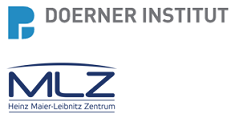Speaker
Description
In medieval Europe it was common practice to wear amulets as lucky charms and to ward off evil. These lucky charms could for example consist of thin sheets of lead with an inscription of letters or runes scratched onto the surface. These lead sheets were then often folded several times or rolled to conceal and preserve the text but also to enhance the effect of the inscription. The study of such amulets can be an important source of information for better understanding the beliefs and practices of the common people in medieval times. For such an investigation it would be necessary to unfold the amulets bearing the inscription. Unfortunately, many of the discovered amulets are in a bad state showing partially heavy signs of corrosion, which makes it very risky to unfold or unwrap the objects mechanically. But, the amulets would be damaged, and lose their original appearance, even if they are not corroded. Tomography is always the better way, for corroded as well as for intact amulets.
In this study, we present a joint project on the documentation of medieval amulets found in Norway based on neutron imaging data. We will show on the example of an amulet found in an urban excavation in the historic centre of Oslo (Norway) how neutron tomography can used to virtually unfold ancient lead amulets and make the inscription readable again. We present different approaches for the unfolding of the experimental data acquired at the neutron imaging beamlines of the Paul Scherrer Institut, Villigen Switzerland.

